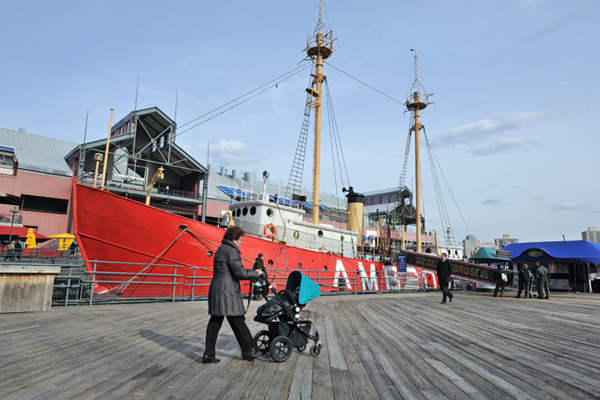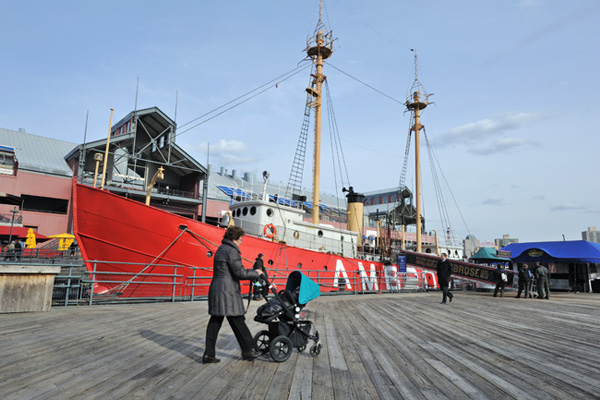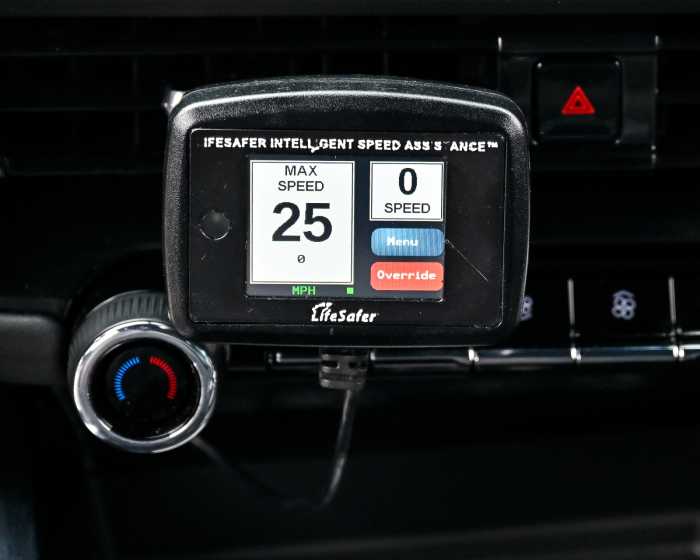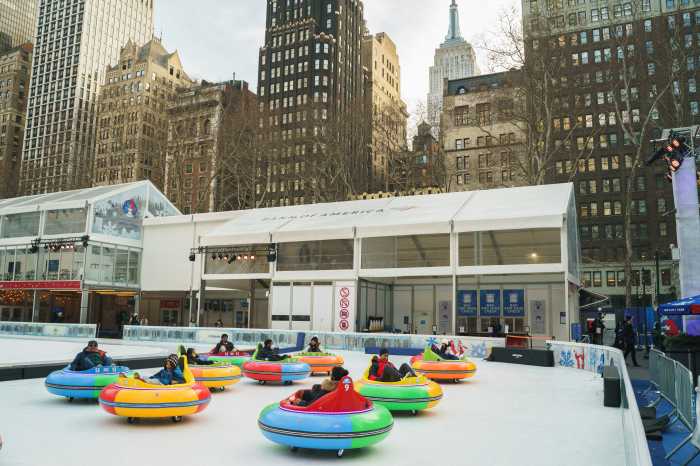
BY TERESE LOEB KREUZER | Easily visible from more than a block away, the freshly painted red hull of the Ambrose lightship gleams in the sunlight. That was the idea behind the color selected by the U.S. Coast Guard in the 1930s for lightships such as the Ambrose that were positioned near hazardous shipping channels to keep other ships from running aground on rocks and sandbars. Make the lightships visible and make them heard with massive foghorns and resonant bells.
Between 1820 and the 1950s, fewer than 200 lightships were constructed in the United States. Most have long disappeared. Ambrose, built in 1907, was given by the Coast Guard to the South Street Seaport Museum in 1968, where she has been a fixture on Pier 16 ever since. However, a few months ago, McAllister Towing took her over to Caddell Dry Dock in Staten Island for hull repairs and a new paint job. On March 5, McAllister brought her back to her usual spot.
Ambrose served until 1963, and then went to the 1964 World’s Fair as part of the Coast Guard exhibit. During her working years, she was stationed first in the Ambrose Channel at the entrance to New York harbor’s lower bay. In 1932, she was replaced by a newer ship and moved closer to Staten Island. Then, with some upgrades from steam propulsion to diesel and the additions of captain’s quarters and a radio shack, she was sent to Sandy Hook in 1936. During World War II, she served as an examination ship at Fort Hancock, N.J. In 1989, she was designated a National Historic Landmark.
“Ambrose was the first vessel in the South Street Seaport Museum’s collection,” said Jonathan Boulware, the museum’s waterfront director. “She’s an icon.”
Boulware said the museum was grateful to Caddell Dry Dock and to its president, Steve Kalil, for doing such a good job of repairing the ship.
“It’s great to be in the hands of professionals,” Boulware said, while noting that not all dry dock companies would know how to repair a historic ship.
The Ambrose has a riveted steel hull with plates joined together by passing rivets through holes in the metal. This method of construction was labor intensive, said Boulware, and was replaced during World War II by welding techniques. He said that the Empire State Building and the Battery Maritime Building on South Street, which was completed in 1909, use similar construction methods.
The Ambrose is remarkable because much of the interior and equipment used on the ship are intact. The pilothouse still has its original wheel, radiator and speaking tubes, through which the captain could communicate with people in the engine room. The radio room (called the “radio shack”) has transmitters such as were installed on more than 1,000 ships during World War II. A sign on this equipment notes that few have survived because of torpedoes, bombs, storms and collisions.
The radio shack is also equipped with gear for receiving and sending Morse code and with a manual Underwood typewriter that would have been used to transcribe it. Radio gear was especially useful in bad weather to communicate with ships that the lightship was guiding through the Ambrose Channel. The radio installation on the Ambrose was the first successful use of this technology to guide ships at long distances.
The Ambrose’s bell, inscribed “USLHE, 1907,” still hangs in front of the pilothouse. (“USLHE” stands for “United States Lighthouse Establishment,” the part of the U.S. government that was responsible for lightships before the U.S. Coast Guard took them over.) A capstan with the official name of the ship, “U.S.L.V. No. 87” and the name of the Hyde Windlass Co., of Bath, Maine stands in the bow, where it would have been wrapped with ropes and chains.
The ship required a massive anchor to keep it in position when it was being battered by storms and high seas. “The guys who worked on this ship endured horrendous conditions,” said Boulware. “They were out maintaining the lights in all weathers.”
Lightships such as the Ambrose were used in places where the water was too deep or the bottom too soft to build a lighthouse. But tall towers equipped with automatic lights, fog horns and radio beacons eventually replaced lightships. The last U.S. lightship was decommissioned in the beginning of the 1980s.
The South Street Seaport Museum hopes to be able to invite visitors on board the Ambrose in the late spring after the deck has been repaired. Admission to the ship will be included in the price of museum admission.
Boulware said that volunteers are needed to help get the Ambrose back in shape and ready for visitors. The Seaport volunteers work on Saturdays. To volunteer email volunteercoordinator@seany.org.






































